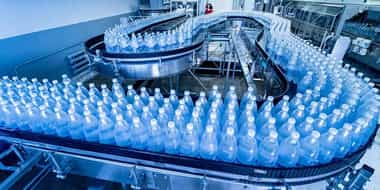Customer demand for high-performance compounds continues to grow, especially in the automotive as well as electrical and electronics markets.
Last month, A.
Schulman, a global supplier of plastic compounds and resins, announced two new production lines at its Germany-based Kerpen plant, to help meet that demand.
"This investment is indeed aligned with the expansion of our product portfolio, and in particular with the production of our new range of (PPS compounds)," says Horst Klink, vice president engineering plastics. "It also will increase our flexibility in production to better serve our customers with tailor-made specialty compounds."
In addition to the two twin screw extruders, Schulman also invested in a fully automatic packaging line, the company says.
WHAT IS THE COMPOUNDING OF PLASTIC RESINS?
According to BCC Research analyst Charles Forman, the compounding of plastic resins is the addition of other materials to “neat” resins in order to add desirable properties or to make them more processable.
“As plastic resins leave the chemical polymerization reactor in which they are formed, they are ‘neat’ polymers,” Forman explains. “They are essentially pure compounds consisting only of the molecules of the polymer produced. Some of these resins, like PVC, are almost impossible to process as neat polymers, so additional chemicals and other materials must be added to make them commercially useful. For other resins, like high-density polyethylene (HDPE) that can be satisfactorily processed in neat form, in virtually all cases some additive or additives are used, such a colorants, to add color to the formed product like an HDPE white milk bottle or a colored motor oil bottle, or a UV absorber to prevent discoloration from exposure to
sunlight.”
Three types of companies conduct the operation: resin producers; plastics processors (such as injection and blow molders, thermoformers, extruders and film/sheet producers); and independent compounders like A. Schulman—companies whose business is making plastic compounds and masterbatches, not resins or molded plastics products, Forman says.
Twin-Screw Extruders. Twin-screw extruders have two intermeshing screws in one barrel and have the advantage of increased output, lower energy needs, superior polymer uniformity, closer control of parameters and ability to handle very high loadings, according to Forman. High-speed energy input (HSEI) twin-screw extruders are extensively used to compound plastics. A type called co-rotating intermeshing is used in a majority of total compounding operations. The HSEI extruder feeds, melts, mixes, degases and pumps.
Twin-screw extrusion processes also utilize other types of equipment, some of which includes high-performance extruders, multi-screw ring extruders, planetary extruders, reciprocating-screw kneaders, disk-type extruders, twin-rotor continuous mixers and gear pumps.
ENGINEERING RESINS: PPS
Forman notes “quite a few additional engineering thermoplastics are compounded with additives. These resins include polyacetals, polysulfones, polyphenylene sulfides (PPS), polyimides, polyketones, fluoropolymers, polyphenylene oxides (PPOs) and others. PPS polymers are highly crystalline aromatic polymers prepared from p-chlorobenzene and sodium sulfide,” he adds.
“PPS is one of the most important high temperature polymers because of its resistance to heat, acids and alkalies, and to mildew, to bleaches, aging, sunlight, and abrasion. It absorbs only small amounts of solvents and resists dyeing. PPS polymers are inherently flame retardant and can be injection- or compression-molded, and are available in reinforced grades: either with glass or minerals.”
Leading producers of PPS resins include Solvay Specialty Polymers (which bought the Ryton and Xtel brands from Chevron Phillips in 2014), Celanese (Fortron), Sabic Innovative Plastics (formerly GE Plastics, with Noryl brand), and Toray (Torelina), according to Forman.
NEW DEVELOPMENTS AMONG KEY PLAYERS
Earlier in 2015, Schulman announced additional PET (polyethylene terephthalate) compounding capacity at its Bornem masterbatch plant in Belgium. Schulman has grown by acquisition and completed 11 deals in the last six years, spending $1.4 billion for these companies. The largest was its $800 million acquisition of Citadel Plastics in 2015.
Ohio-based supplier Americhem has added three million pounds of compounding capacity at its Cuyahoga Falls facility. It added two small-lot manufacturing work cells and made other improvements to the site’s manufacturing area.
Compounder RTP Co. will make and market compounds based on Solvay Specialty Polymers’ polyphenylsulfone (PPSU) resins for the commercial aircraft industry. The agreement covers Radel-brand R-7000 PPSU resins for aircraft cabin interior applications. The materials are claimed to offer excellent aesthetics, impact strength and chemical resistance.
Also in 2015, RTP acquired Polymer Partners LLC (Henderson, Ky.), a compounder that specializes in black color compounds and masterbatches. It employs about 35 and uses several types of black pigments, such as carbon black and graphite, for applications such as wire and cable, pipe, and film and sheet.
Last summer, Clariant International announced a reorganization of its Plastics & Coating business, in which three business units, Masterbatches, Additives and Pigments, will be combined into one unit. All existing business unit structures will be retained, as will all 7,100 employees of the three units.
MARKET TRENDS
Forman notes the following market trends, based on his research:
- Compounding by processors should grow faster than that by producers or independent compounders.
- Calcium carbonate will remain the dominant thermoplastics filler with almost 80% of the filler market by volume.
- Carbon fiber reinforcement demand will continue to grow at double-digit rates, led by industrial (including automotive/energy) applications.
- Global sales of carbon nanotube-reinforced polymers will continue to grow at double-digit rates from 2015 to 2020, but probably more slowly than in the recent past.
- Natural fiber-plastic composites should continue to grow at a five-year CAGR of 9.8% from 2015 to 2020, led by construction-molded applications.
- Use of masterbatches (primarily color concentrates) should grow at a projected U.S. GDP rate of 2.5% from 2015 to 2020.
NORTH AMERICAN MARKET OUTLOOK
The North American market for thermoplastic compounds reached 87.33 billion pounds in 2014. This market is expected to grow from 88.78 billion pounds in 2015 to 100.2 billion pounds by 2020, registering a compound annual growth rate (CAGR) of 2.4% over the next five years, according to Forman.




